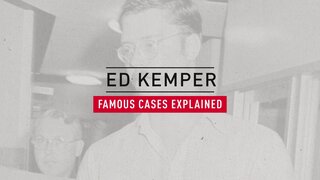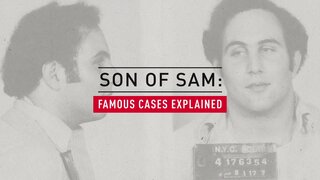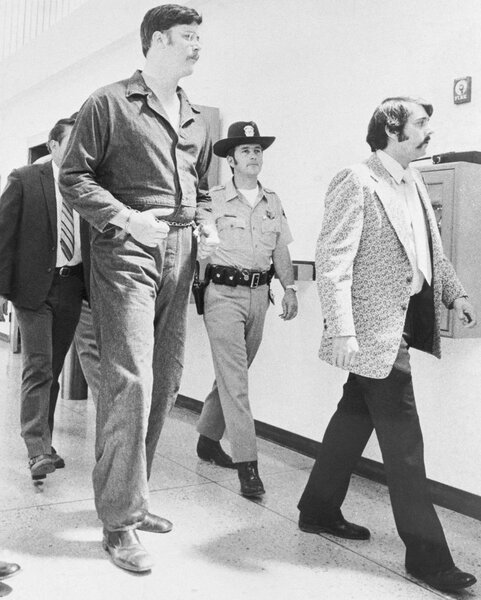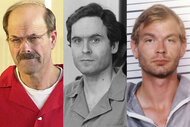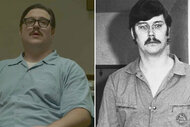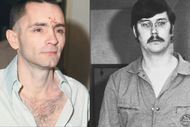Create a free profile to get unlimited access to exclusive videos, breaking news, sweepstakes, and more!
The Horrifying True Story Of The Santa Cruz 'Co-Ed Killer' Ed Kemper
Edmund Kemper III viciously and sadistically murdered 10 people, including his own grandparents and mother.
Murders A-Z is a collection of true crime stories that take an in-depth look at both little-known and infamous murders throughout history.
At 6-foot, 9-inches tall, weighing in at over 250 pounds, Ed Kemper, who became known as the “Co-Ed Killer,” was an imposing figure. His menacing size, however, was undercut by his bookish appearance and thoughtful demeanor. When Kemper opened his mouth, whether it was to confess his crimes, recount their details or analyze his motivations, his intelligence, clarity and forthrightness was surprising to many. Was this the same man who murdered his own grandparents at the age of 15, abducted and killed six teenage girls and caved in his own mother’s skull with a claw hammer before defiling her corpse?
Born Edmund Emil Kemper III in Burbank, California, on December 18, 1948, Kemper was the middle child and only son of Clarnell Elizabeth Kemper and Edmund Emil Kemper II. Kemper’s parents split up when he was a boy, and he lived with his mother who was a “complete alcoholic psycho,” according to his half-brother David Weber. Known to his family as “Guy,” Kemper was unusually large at a young age and allegedly endured abuse from his mother.
“She would lock Guy up in the basement. Anytime he tried to talk to her about girls, she would say something about girls never wanting to date someone as ugly as him,” Weber told the UK’s Daily Mail in 2017.
As a boy, Kemper began having violent fantasies and acting them out. He killed the family’s pet cats, in one case placing its head on an altar, in another hiding the remains in his closet. He would even cut the heads and hands off his older sister's dolls. Above all, Kemper nurtured a burning hatred of his mother, a hatred that would eventually ignite into a blaze of violence.
At the age of 15, Kemper ran away from home and showed up on his father’s doorstep. If he was expecting a warm welcome, he didn’t get it. According to David Weber, he “creeped out” Edmund II’s new wife and was sent to live his paternal grandparents in rural Northern California. It was not a good match. Ed fought with his grandmother Maude Kemper almost as much as he did with his own mother. In a 1974 interview with “Front Page Detective” magazine, he said his domineering grandmother emasculated him.
"I couldn't please her... It was like being in jail... I became a walking time bomb and I finally blew,” Ed said.
On August 27, 1964, Ed Kemper shot his grandmother three times in the head and back as she sat at the kitchen table in her North Fork, California, home following an argument. When his grandfather Edmund Kemper, Sr. came home from grocery shopping, Ed shot him in the driveway. He then called his mother, who told him to wait for the authorities.
After being taken into custody, he allegedly told police, “I just wanted to see how it felt to shoot Grandma.”
[Photo: Getty Images]
Psychiatrists determined that Kemper suffered from paranoid schizophrenia and he was committed to Atascadero State Hospital, an all-male, maximum security facility which houses California’s criminally insane. At Atascadero, he scored 145 an on I.Q. test, considered genius level, and was a model prisoner, entrusted to help hospital staff administer psychiatric tests to other patients. He was paroled on his 21st birthday in 1969 and released into the care of his mother.
While Edmund was at Atascadero, his mother had re-married and divorced, and now went by the name Clarnell Strandberg. She worked as an administrative assistant at the University of California Santa Cruz, and had a duplex apartment in the town of Aptos, which he moved into. Ed attended community college and aspired to go into law enforcement, but was rejected because of his size. He then began frequenting local cop bars, where he became acquaintances with several members of the Santa Cruz Police Department, who nicknamed him “Big Ed.” Eventually, he got a job with the State of California Highway Department.
Who Were Ed Kemper's Victims?
Though Edmund Kemper convinced all who met him that he was an affable, oddball, law-abiding citizen, his inner rage and thirst for violence kept growing until he could no longer contain it. On May 7, 1972, Kemper picked up two 18-year-old Fresno State students who were hitchhiking in Berkeley, California. Mary Ann Pesce and Anita Mary Luchessa thought they were getting a ride to Stanford University. Instead, Kemper took them to a remote area and stabbed them to death. He brought their dead bodies back to an apartment where he was living at the time and had sex with them before dismembering and disposing of them.
Several months passed before Kemper struck again. His next victim was 15-year-old dance student Aiko Koo, who he picked up while she was hitchhiking after missing her bus on the evening of September 14, 1972. Kemper then strangled her to death. On his way home, he stopped at a local bar for a couple of drinks, while her dead body sat in his trunk. He then brought it home, had sex with it and cut it into pieces. The next day, he appeared at a parole hearing in front of a panel of psychiatrists who recommended his juvenile murder record be expunged.
Kemper soon moved back in with his mother, and their relationship was as fraught with turmoil as ever before. On January 7, 1973, he picked up hitchhiker Cindy Schall, 18, who attended Cabrillo College in Aptos. After driving her to a secluded area, he pulled out a .22-caliber pistol and shot her dead. He took her corpse back to his mother’s apartment, storing it in his closet overnight, having sex with it, then dismembering it in the bathtub. He buried Schall’s severed head faceup in the garden that his mother’s bedroom overlooked because, he would later say, "she had always wanted people to look up to her."
A month later, on February 5, 1973, Kemper went hunting for fresh victims after another nasty fight with his mother. On the UC Santa Cruz campus, he picked up Rosalind Thorpe, 23, and Alice Liu, 20, who thought they’d be safe since there were two of them and Kemper had a UCSC sticker on his car. They were wrong. Kemper shot them both, then took their bodies back to his mother’s home for his usual depravities. After talking shop with his cop buddies, he had taken to removing the bullets from his victims’ heads, which he would sometimes hold on to for a few days and have necrophilic oral sex with.
It's believed he killed at least 10 people.
What Did Ed Kemper Do To His Mom?
On April 20, 1973, Ed Kemper’s killing spree reached its climax with the murder of his mother Clarnell, 52. After a brief exchange of unpleasantries when his mother came home from a night out with friends, Kemper waited until she fell asleep, then bludgeoned her to death with a clawhammer. He proceeded to cut off her head and have sex with it. He then placed it on a shelf and “screamed at it for an hour,” before throwing darts at it and smashing it to pieces with his hammer. He then removed the tongue and larynx and put them in the garbage disposal.
The following day, Kemper invited his mother’s best friend, 59-year-old Sara “Sally” Hallett, over for dinner. When she arrived, he strangled her, cut off her head and then spent the night in the apartment with the dead bodies of Hallett and his mother. The following morning, on Easter Sunday, he left a note for police, and drove off.
In Pueblo, Colorado, on April 24, 1973, Kemper pulled over at a payphone and called the Santa Cruz Police Department to confess his crimes. He allegedly had to call three times and request to speak to an officer he knew personally before they would take his confession seriously. He was arrested and indicted on eight counts of first-degree murder. While in jail awaiting trial, he twice attempted to commit suicide by slashing his wrists.
At his trial that fall, Kemper’s court appointed lawyer’s tried to claim he was not guilty by reason of insanity. However, the jury found him “legally sane” and on November 8, 1973, after five hours of deliberations, convicted him on eight counts of murder. The following day, he was sentenced to life in prison.
“Well, it's all over now,” he said after hearing the sentence.
Is Ed Kemper Still Alive?
Since his conviction, Edmund Kemper has been serving his time at California Medical Facility state prison. Now in his 70s, he is from all accounts a model prisoner and as part of a program at CMF has recorded several hundred books on tape for the blind. He was first eligible for parole in 1979, though since 1985, he was intermittently waived his right to a hearing and, according to attorney Scott Currey, “He’s just as happy going about his life in prison.”
He is next eligible for parole in 2024.
To learn more about "The Co-Ed Killer," watch "Kemper on Kemper: Inside the Mind of a Serial Killer" on Oxygen.com.
(This story was originally published on October 9, 2018 and has been updated with new information.)
